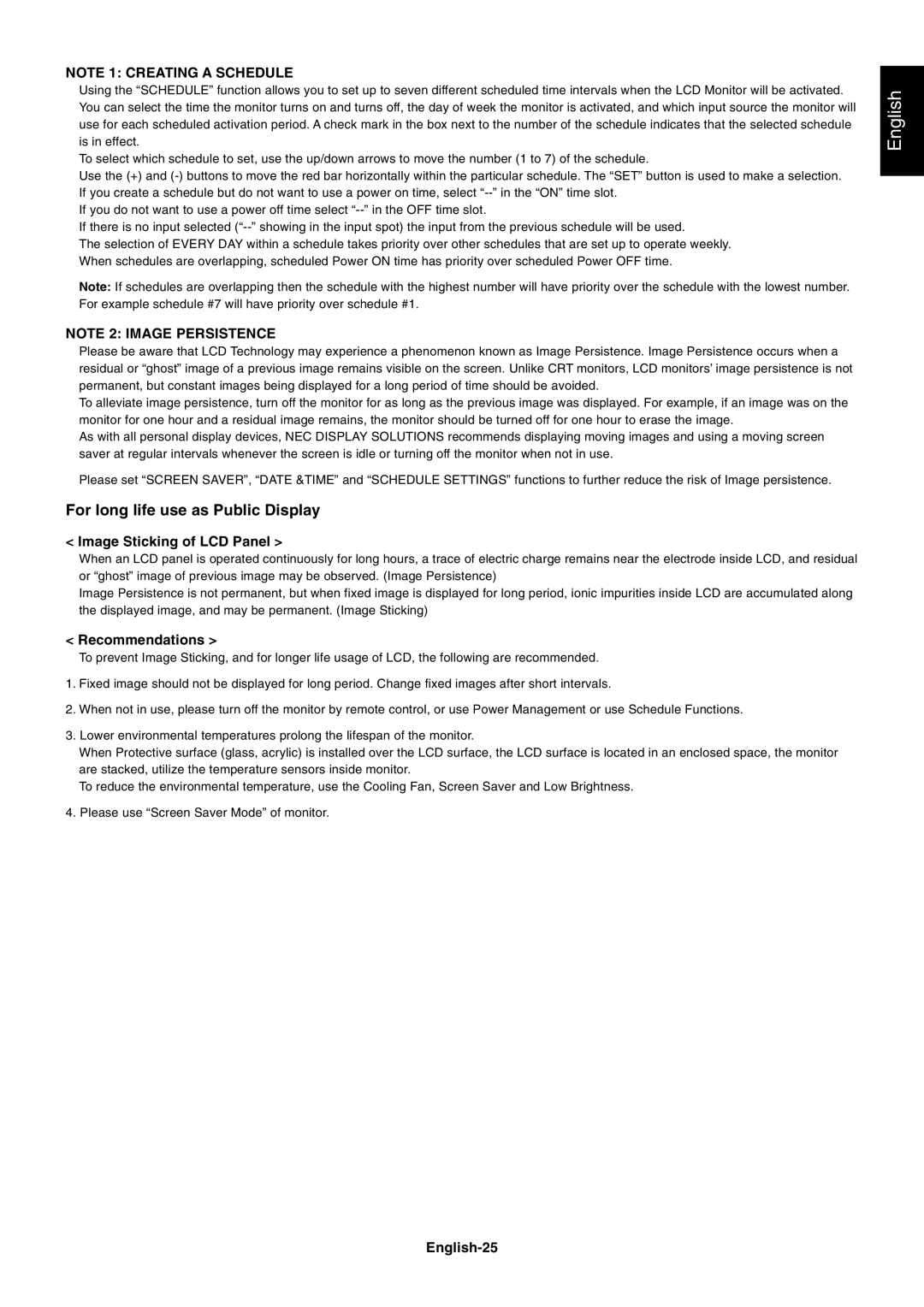NOTE 1: CREATING A SCHEDULE
Using the ÒSCHEDULEÓ function allows you to set up to seven different scheduled time intervals when the LCD Monitor will be activated. You can select the time the monitor turns on and turns off, the day of week the monitor is activated, and which input source the monitor will use for each scheduled activation period. A check mark in the box next to the number of the schedule indicates that the selected schedule is in effect.
To select which schedule to set, use the up/down arrows to move the number (1 to 7) of the schedule.
Use the (+) and
If you do not want to use a power off time select
If there is no input selected
The selection of EVERY DAY within a schedule takes priority over other schedules that are set up to operate weekly. When schedules are overlapping, scheduled Power ON time has priority over scheduled Power OFF time.
Note: If schedules are overlapping then the schedule with the highest number will have priority over the schedule with the lowest number. For example schedule #7 will have priority over schedule #1.
NOTE 2: IMAGE PERSISTENCE
Please be aware that LCD Technology may experience a phenomenon known as Image Persistence. Image Persistence occurs when a residual or ÒghostÓ image of a previous image remains visible on the screen. Unlike CRT monitors, LCD monitorsÕ image persistence is not permanent, but constant images being displayed for a long period of time should be avoided.
To alleviate image persistence, turn off the monitor for as long as the previous image was displayed. For example, if an image was on the monitor for one hour and a residual image remains, the monitor should be turned off for one hour to erase the image.
As with all personal display devices, NEC DISPLAY SOLUTIONS recommends displaying moving images and using a moving screen saver at regular intervals whenever the screen is idle or turning off the monitor when not in use.
Please set ÒSCREEN SAVERÓ, ÒDATE &TIMEÓ and ÒSCHEDULE SETTINGSÓ functions to further reduce the risk of Image persistence.
For long life use as Public Display
<Image Sticking of LCD Panel >
When an LCD panel is operated continuously for long hours, a trace of electric charge remains near the electrode inside LCD, and residual or ÒghostÓ image of previous image may be observed. (Image Persistence)
Image Persistence is not permanent, but when fixed image is displayed for long period, ionic impurities inside LCD are accumulated along the displayed image, and may be permanent. (Image Sticking)
<Recommendations >
To prevent Image Sticking, and for longer life usage of LCD, the following are recommended.
1.Fixed image should not be displayed for long period. Change fixed images after short intervals.
2.When not in use, please turn off the monitor by remote control, or use Power Management or use Schedule Functions.
3.Lower environmental temperatures prolong the lifespan of the monitor.
When Protective surface (glass, acrylic) is installed over the LCD surface, the LCD surface is located in an enclosed space, the monitor are stacked, utilize the temperature sensors inside monitor.
To reduce the environmental temperature, use the Cooling Fan, Screen Saver and Low Brightness.
4.Please use ÒScreen Saver ModeÓ of monitor.
